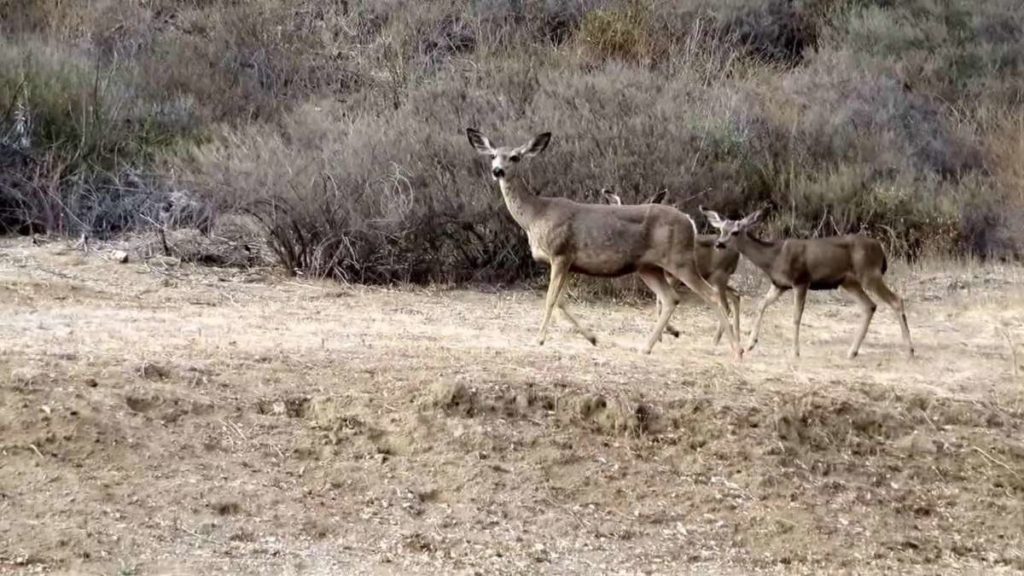Prolonged drought conditions can have impacts on wildlife. These impacts range from relatively minor – such as decreased fat reserves – to impacts resulting in a significant loss of wildlife.
While some of these impacts from drought can be closely monitored and tracked, other impacts are difficult to monitor or evaluate.
Currently, Louth SPCA staff are closely watching the impacts the current drought conditions may have on the county’s wildlife populations. A summary of the potential impacts on wildlife is provided below.
Disease outbreaks
Drought conditions can affect wildlife populations in many ways, from changing homeland ranges in an effort to find water to creating conditions that can impact health. High temperatures and low rainfall can contribute to outbreaks of Clostridium botulinum or avian botulism, which is a bacterium that typically resides dormant in the soil. Under the right conditions, this bacteria can replicate and produce toxins. These toxins are typically concentrated in maggots and other invertebrates that feed on decaying matter that is a good source of protein for the botulism bacteria. Birds like waterfowl then ingest the toxins through feeding on these organisms or drinking infected water. Species that are most impacted by a botulism outbreak are associated with wetland communities including ducks such as mallards, wood ducks, and teal and waterbirds such as yellow legs, pelicans or great blue herons.
Habitat
As drought conditions increase, the impacts on plants can be readily observed, since plants simply reduce the number of stems they produce while others shrivel and die back. This reduction in plant growth results in less available hiding cover, which could increase predation rates for wildlife as well as produce fewer flowers for insects and, as a result, less available food. Species that could be impacted by this decreased habitat quality would be ground nesting birds such as turkeys and pheasants as well as ground dwelling mammals such as ground squirrels.
Nesting birds
The timing of this year’s drought conditions is not likely to have a significant adverse impact on nesting wildlife, since most birds have fledged the nest and are no longer confined to a specific nesting site. The potential exists, however, that high temperatures and low moisture levels can result in bird losses.
Reduced food sources
Extremely dry conditions also reduce the available water sources that many insects are dependent upon for a portion of their life cycle. Although reduced insect levels can be a positive for people getting outside in the evenings, lower insect levels for bats can mean less food and as a result, lower fat reserves for migration and hibernation. In addition to potential mortality that reduced food sources may cause, wildlife in drought conditions may also need to travel greater distances to find available food. This extra effort also subjects them to increased predation rates themselves and an increased likelihood of accidents.
In addition to reduced insects for food, the production of other food sources – such as berries and mast, which include acorns or hickory nuts – could also be reduced. Similar to a reduction in insects, a reduction in the available berries and mast can impact wildlife by requiring additional travel to find adequate food sources, causing both mortality from increased predation or accidents as well as indirect mortality from reduced fat reserves needed for hibernation. These impacts can ultimately result in reduced number of young next year.
Another potential impact that residents in the drought areas may experience is an increase in the number of wildlife visiting yards and outbuildings searching for food and water sources. As food sources decrease in the wild, some wildlife species such as the fox may search out easier food sources such as pet food dishes, cattle troughs or gardens that are regularly watered.
Concentrating wildlife
As drought conditions increase, many wildlife will seek alternative habitat locations where habitat conditions are more favourable for them to raise young, seek shelter and provide a water source. Some species that would concentrate in these drought conditions would include a wide array of wildlife that would frequent the remaining watering holes to wetland dependent species such as waterfowl and amphibians, specifically frogs and toads.





